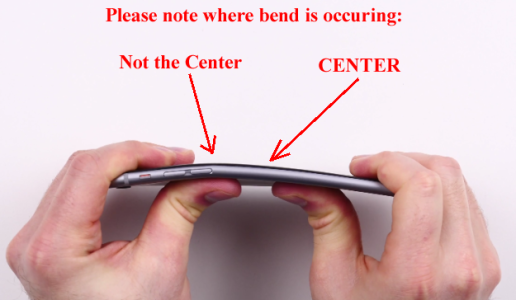The hypothesis is not: The iPhone 6 Plus isn’t prone to bending under focused stress (trying to fold it in half). That means we need to minimise the force directly under a loading point so there isn’t premature failure (deformation) along the middle of the phone. We can then ask the following:
Does a phone consist of a uniform material?
Does a pocket focus stress at a central point?
The answer to both questions is ‘No’. First, a phone is made of multiple components, which is closer to a composite material than a sample with a uniform internal structure (like plastic). Second, squeezing a phone between your pants and thigh spreads force across the whole surface of the device, it’s not concentrated along the middle (unless your phone is sideways and you happen to have super-sharp thighs).
...
Consumer Reports should be commended for its scientific approach. They measure forces, their tests are consistent, and their results suggest the iPhone 6 Plus isn’t prone to bending. But headlines stating that this puts bendgate to bed are premature. No matter how rigorous the methodology, you can’t draw the right conclusions from the wrong hypothesis. Trying to fold a phone in half – whether that’s between your hands or on a workbench – doesn’t replicate normal use.
... At this stage, it’s still too early to conclude from independent tests that bendgate doesn’t exist.
iPhone 6 Bendgate Isn't Over. It's Missing A Scientific Test - Forbes


 Your pocket won't discriminate.
Your pocket won't discriminate. 

